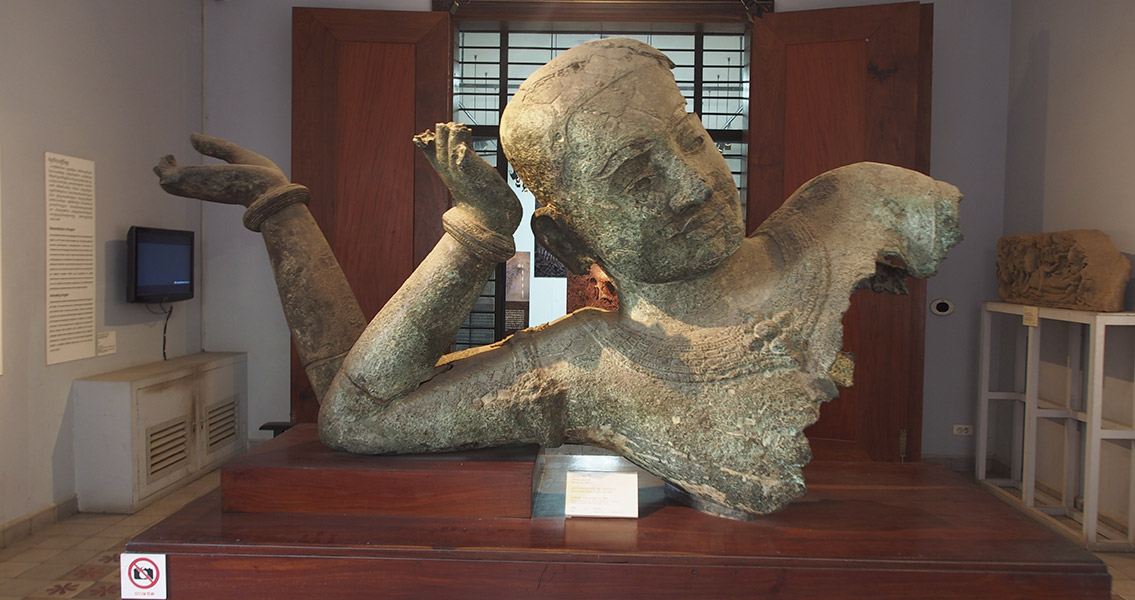<![CDATA[A massive workshop, thought to have been used to create equally impressive bronze statues during the Angkorian era, has recently been identified in Cambodia. Originally excavated in 2012, the site – which is directly adjacent to the famed Royal Palace of Angkor – has been subjected to rigorous research over the last several years. The exhaustive study of the bronze workshop, which has been dated to at least as far back as the eleventh to twelfth centuries, has culminated in a new academic article published in the Bulletin de l’École Française d’Extrême-Orient (BEFEO), a journal which has been publishing news of the region’s archaeological finds for over a century. The new report’s co-author, Martin Polkinghorne from Flinders University in Adelaide, Australia, had been alongside EFEO and ASPARA National Authority researchers at the time of the discovery. He had originally not expected to find such an extensive bronze workshop; in fact, the scientists had instead fully expected to find a workshop for cutting and shaping stone, based on the findings of Henri Marchal, an EFEO conservator that originally came across the site in 1926. Polkhinghorne and his team did find evidence left behind by stone-cutters, but also discovered the types of apparatus needed for creating the cyclopean bronze sculptures the Angkorian era was known for. The equipment, which has been carbon dated to the eleventh and twelfth centuries, included large furnaces for smelting bronze, crucibles capable of holding up to two liters of the molten metal at a time, scraps of unused bronze, and sculptures that had been left in several states of completion as well. In an interview with the Phnom Penh Post, the scientist characterized the find as one that truly excited the research team. Discovering definitive proof that the Angkorians used a centralized location to provide large-scale bronze production turns the previously-held beliefs on their head, Polkinghorne added, as it refutes the idea that these sculptures were created on-site and then installed in place. Instead, the gigantic production facility implies an industrial, centralized approach was used to fabricate large portions of the bronze statues that adorned places of importance for the Angkorians. Indeed, the size of the workshop alone could be as much as a kilometre in length according to researchers. Bronze was one of the most highly valued precious metals during the Angkorian era, thanks to the scarcity and value of its main components, tin and copper. In many cases these statues were gilded with gold, another rare and precious metal; these sculptures proliferated from one end of Angkor to the other, which included not just modern-day Cambodia but farther-flung territories of Laos and Thailand as well. More than 20,000 gold, silver, and bronze statues would have been spread across these territories, according to the Preah Khan, a twelfth century Angkorian inscription. The ruling elite of Angkor are likely to have been involved directly with the production of these statues, Polkinghorne pointed out. As the workshop was found to be located directly next to Angkor’s royal seat of power, Angkor Thom, there seems little in the way to disprove that the Angkorian rulers weren’t investing vast sums of resources into bronze production. With the majority of these statues designed to not just venerate figures from Angkorian religion but also to reinforce the awesome power of the ruling class, Polkinghorne pointed out that the Angkor kings used the production of these massive works of art as a way to reinforce their own authority and legitimacy. The research study, which appears in the 100th issue of BEFEO, is yet to be made available online. To learn more, visit www.efeo.fr ]]>
12th Century Bronze Workshop Found in Cambodia
